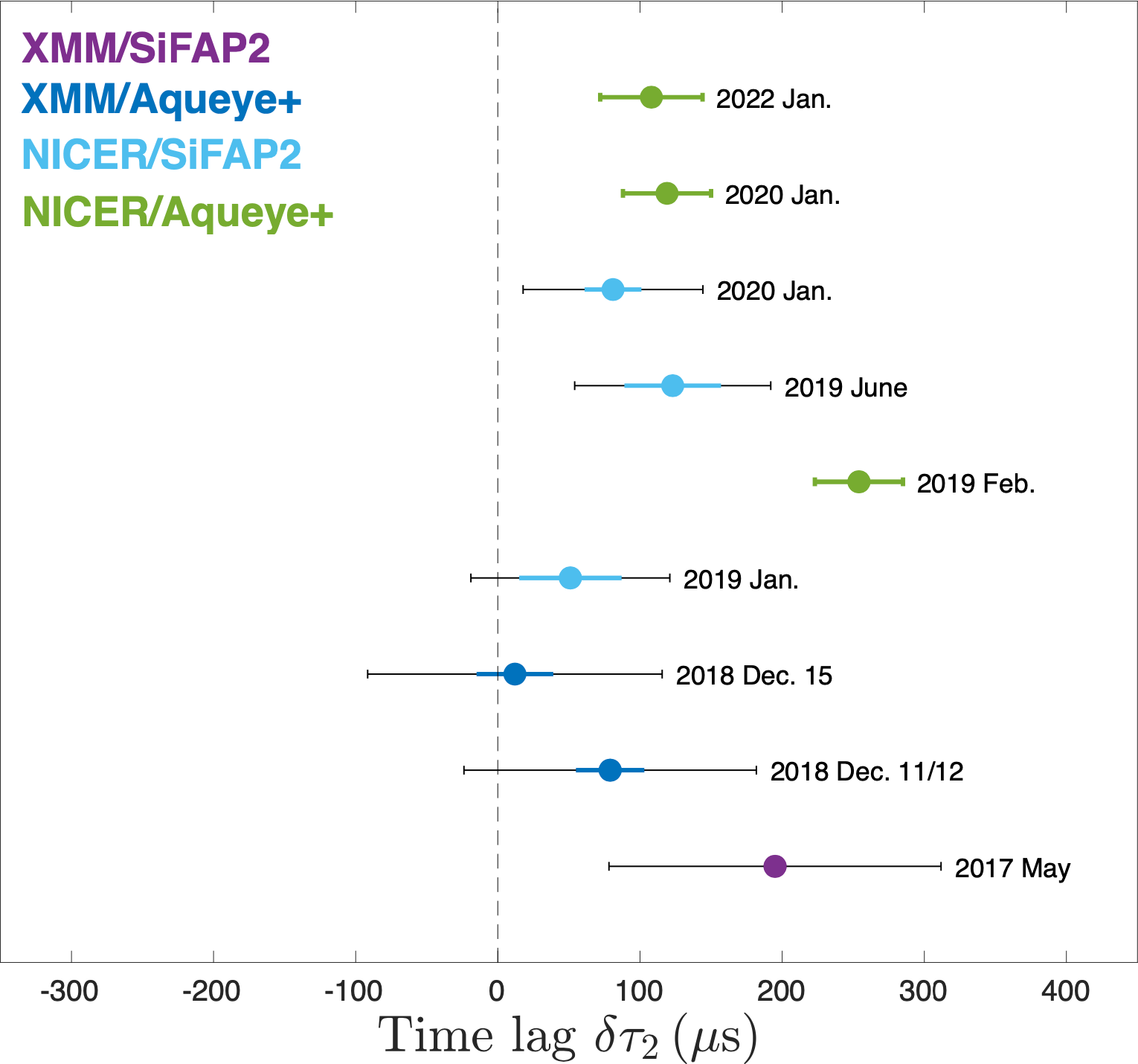NICER / ISS Science Nugget
for December 15, 2022
Testing Transitional Millisecond Pulsar Models
Among the hundreds of neutron stars known to be spinning with millisecond rotation periods (hundreds of revolutions per second), a rare subset - just a handful - have been found to be "transitional" (tMSPs). They are all in binary systems with a companion star, and they exhibit two states: one in which they emit pulsations at X-ray wavelengths (and, rarer still, in visible light), and another in which they are seen pulsing only at radio wavelengths. The X-ray-bright state also shows evidence for accretion, the transfer of matter from the companion star. These systems demonstrate the process that had long been proposed for how these exceptionally fast-spinning stars achieve their high rotation rates in the first place: the transfer of mass and angular momentum from the companion star. The discovery of the first tMSP, pulsar J1023+0038, was hailed as the resolution of a "missing link" problem in stellar binary evolution. PSR J1023 was also the first millisecond pulsar from which visible-light pulsations were detected, thanks to a new generation of high-speed optical cameras.
For the last few years, PSR J1023 has been in an X-ray bright state, A recent NICER Guest Observer project acquired simultaneous X-ray and optical data using two ground-based instruments: the SiFAP2 and Aqueye+ photometers, mounted on the Telescopio Nazionale Galileo (Canary Islands) and the Copernicus Telescope (Asiago, Italy), both facilities of Italy's National Institute for Astrophysics (INAF). The project aimed to definitively measure, for the first time, the relative timing of X-ray and optical pulsations to test theories about the physical mechanism - or mechanisms - responsible for these emissions. In one theory, for example, X-ray and optical pulsations arise in the column of accreted gas that is funneled toward the neutron star surface by its powerful magnetic field; in this model, the pulses would be coincident, but the theory under-predicts the measured optical brightness. An alternative hypothesis invokes emission from a shock where radiation in the pulsar's rotating "wind" meets the inner edge of the accretion disk, far above the stellar surface; this model predicts that the optical pulsations arrive later than the X-ray pulsations.
The analysis of the joint X-ray/optical dataset by G. Illiano (INAF) and collaborators, recently accepted for peer-reviewed publication in the European journal Astronomy & Astrophysics, demonstrates unambiguously that the optical pulses do indeed lag the X-ray pulses by approximately 150 microseconds, consistent with the shocked-wind model for PSR J1023. Small variations in the time lag are seen for measurements made at different times over a several-year span; these are thought to reflect slowly evolving conditions in the accretion flow between the two stars in the system. Future coordinated observations of J1023 and similar systems will further refine our understanding of the interplay between neutron stars and their companion stars in the systems that produce millisecond pulsars, some of the most extreme objects known.


Figure:
Left: X-ray and visible-light pulse profiles of the millisecond pulsar J1023+0038 obtained in simultaneous observations with NICER (blue points, left vertical axis scale) and the ground-based Aqueye+ fast photometer (red points, right vertical axis scale) in February 2019 (top panel), January 2020 (middle), and January 2022 (bottom). One full rotation on the horizontal axis represents 1.69 milliseconds, and the optical pulse peaks are seen to lag the X-ray peaks. Solid lines indicate the best-fitting two-harmonic functions. (Figure credit: Illiano et al. 2022)
Right: Lag times in the optical pulse peak (2nd harmonic) relative to the X-ray peak, as measured by the combinations of instruments show in the legend, where "XMM" refers to ESA's X-ray Multi-Mirror Newton observatory. The intrinsic time-stamping uncertainties of XMM (100 microseconds) and the SiFAP2 photometer (60 microseconds) are comparable to the measured lag (averaging approximately 150 microseconds), whereas NICER and Aqueye+ offer better performance and more robust lag measurements. The colored horizontal bars represent statistical measurement errors, while the black error bars also take into account instrumental absolute timing uncertainties. (Figure credit: Illiano et al. 2022)
<< Previous
Main Index
Next >>